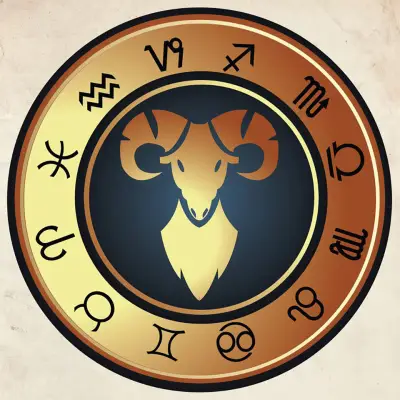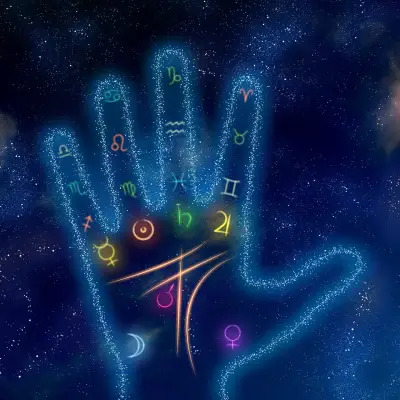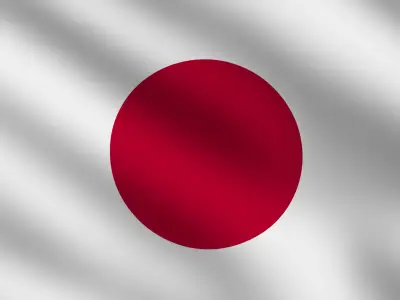If you’ve ever looked at a birth chart, you’ve likely seen lines crisscrossing the circle, connecting planets. These lines represent aspects, a key concept in astrology. But what do they mean, and how do they influence our lives? Whether you're new to astrology or deepening your understanding, this guide explores the symbols and meanings of aspects.
Jump to:
- What Are Aspects in Astrology?
- Why Are Aspects Important?
- How Many Aspects Are There in Astrology?
- The 5 Major Astrological Aspects
- Are There Any Minor Aspects in Astrology?
- How to Identify Aspects in a Birth Chart
- Aspect Patterns in Astrology
- The Role of Planet Signs in Astrology
- Aspect Strength and Orbs
- Combining Aspects with Houses
- Aspect Energies in Transits
- Historical and Mythological Background of Aspects
- How to Interpret Multiple Aspects to One Planet
- Aspects in Relationship Charts (Synastry and Composite Charts)
- Aspect Rulership in Traditional Astrology
- Frequently Asked Questions About Aspects in Astrology
- Study Astrology for £29
Recommended for you!
Best SellersWhat Are Aspects in Astrology?
The definition of an astrological aspect is essentially the distance (measured in degrees) between two planets. The most significant aspects are known as major aspects, but there are also minor aspects that add subtle layers of meaning.
Why Are Aspects Important?
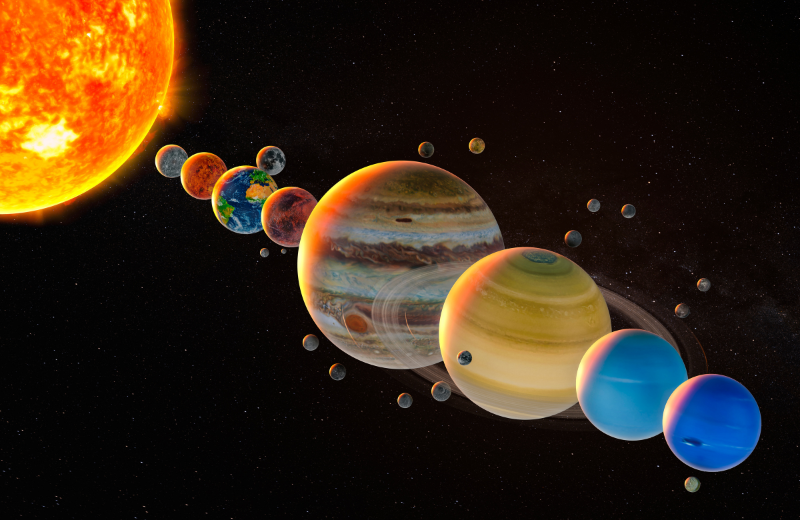
Aspects create a dynamic interplay between planets. Instead of viewing them as isolated energies, aspects allow us to see how these forces work together—or against each other. This helps astrologers interpret the flow of energy in a chart, including areas of harmony, tension, growth, or challenge.
How Many Aspects Are There in Astrology?
In astrology, there are five major aspects and several minor aspects that astrologers commonly use to interpret the relationships between planets. The major aspects are the conjunction (0°), sextile (60°), square (90°), trine (120°), and opposition (180°). These aspects represent the primary angles that planets form with each other and are most influential in a birth chart.
In addition to these, minor aspects, such as the sesquiquadrate (135°) and quincunx (150°), provide additional layers of meaning, though they are less commonly discussed. Together, these aspects form a detailed framework for analysing the energy dynamics in a chart.
The 5 Major Astrological Aspects
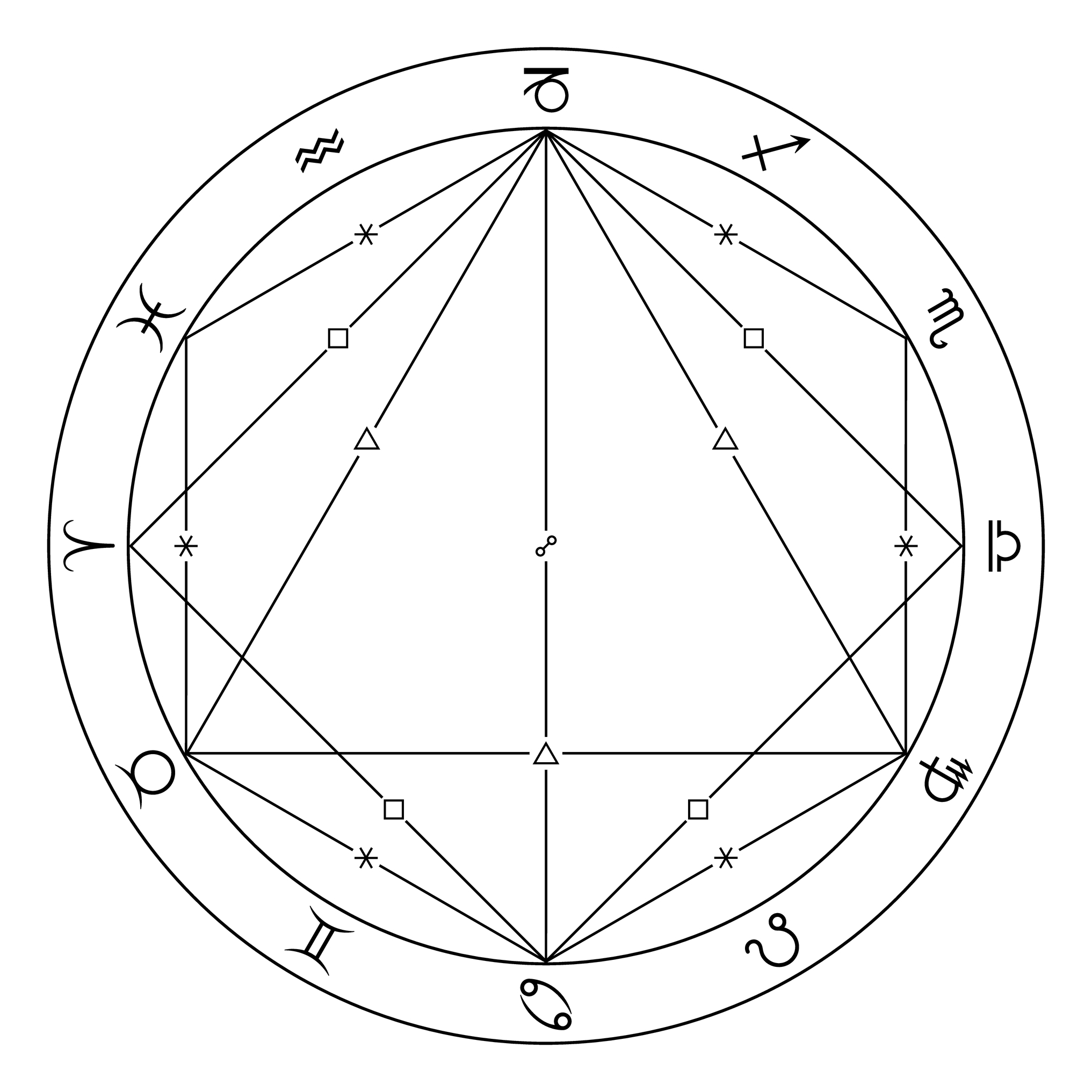
Here’s a breakdown of the most important aspects and their meanings:
1. Conjunction (0°)
Symbol: ☌
Meaning: A conjunction occurs when two planets align in the same zodiac sign or are positioned very close to one another, within an orb (a small degree range) of about 0°–10°. This aspect intensifies the energy of the planets involved, merging their qualities. If the planets are naturally compatible, the conjunction enhances their positive attributes; if they clash, the conjunction can feel overwhelming.
Impact: Conjunctions are considered neutral. Their effects depend on the nature of the planets involved. For instance, a conjunction with benefic planets like Venus or Jupiter usually brings positive outcomes, while malefic planets like Mars or Saturn can feel more challenging.
Example: The conjunction of the Sun and Mercury often enhances focus and intellectual pursuits, but it may also create a tendency to overthink or become self-centred when poorly balanced.
2. Sextile (60°)
Symbol: ⚹
Meaning: Sextiles occur when planets are two signs apart, usually in complementary elements (e.g., earth and water or fire and air). This aspect encourages collaboration and brings small but meaningful opportunities. Unlike a trine, which flows effortlessly, sextiles require you to take the initiative to fully realise their potential.
Impact: Sextiles create opportunities for growth and problem-solving, especially in areas where creativity, relationships, and communication are involved. They encourage a productive yet enjoyable energy.
Example: A sextile between Venus and Mars can create harmony in relationships, balancing affection with passion. However, acting on this aspect is essential to make the most of its potential.
3. Square (90°)
Symbol: □
Meaning: Squares are formed when planets are three signs apart, creating friction between their energies. These aspects are often associated with challenges, but they also represent opportunities for personal growth and transformation. Without squares, there would be little impetus to change, learn, or adapt.
Impact: Squares create turning points in your life, forcing you to address areas of conflict or stagnation. While difficult, they are essential for long-term success and resilience.
Life Applications: Squares often manifest as external challenges, such as conflicts in relationships, career setbacks, or internal struggles. Overcoming these obstacles builds character and strength.
Example: A square between Mars and Saturn might feel like a tug-of-war between ambition and restriction, but it ultimately teaches you how to focus your energy and work strategically.
4. Trine (120°)
Symbol: △
Meaning: Trines occur when planets are four signs apart and in the same element, creating an easy, natural flow of energy. This aspect is considered very fortunate and represents talents, blessings, and opportunities that require little effort to access.
Impact: Trines bring harmony and success in areas ruled by the involved planets. However, because they feel so effortless, they can lead to complacency if not consciously nurtured.
Life Applications: Trines often indicate areas of natural ability or luck. For example, a trine between Mercury and Uranus might suggest a talent for innovative thinking or technology.
Example: A trine between Jupiter and Neptune is an indicator of spiritual insight, empathy, and heightened creativity. This aspect can make it easier to connect with your intuition or higher purpose.
5. Opposition (180°)
Symbol: ☍
Meaning: Oppositions occur when two planets are in opposite signs, pulling their energies in two different directions. This creates tension but also offers the potential for balance and integration if managed wisely.
Impact: Oppositions highlight dualities in your life, such as work-life balance, emotional needs versus practical demands, or independence versus partnership. They challenge you to find common ground between conflicting priorities.
Life Applications: Oppositions often involve relationships, reflecting the dynamic of "me versus you." They require compromise, self-awareness, and an ability to see multiple perspectives.
Example: An opposition between the Moon and Saturn might bring a push-pull dynamic between your emotional needs and external responsibilities. Learning to set boundaries and prioritise self-care is key to working with this aspect.
Are There Any Minor Aspects in Astrology?
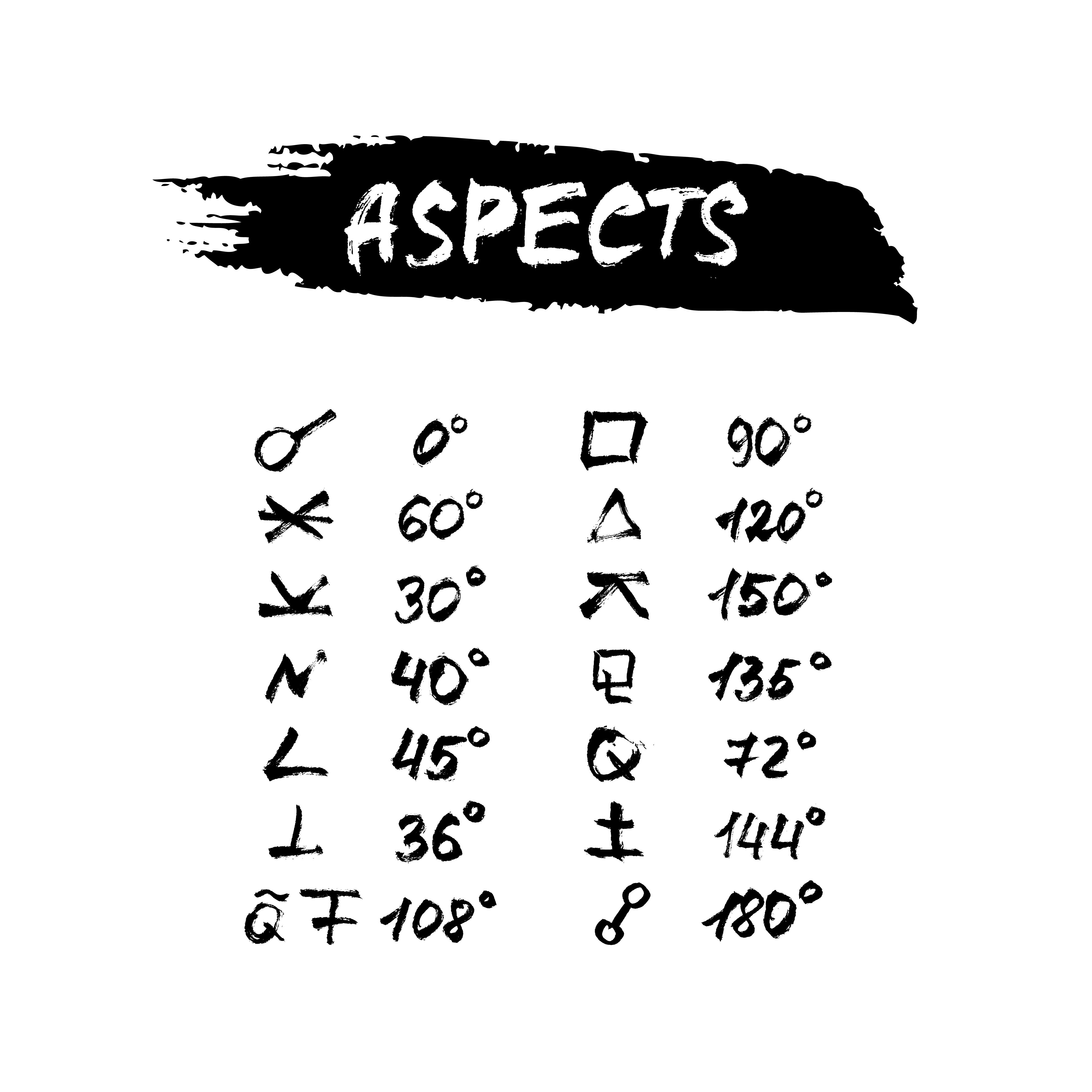
While major aspects are the most frequently discussed, minor aspects add depth to a chart. While not as prominent as major aspects, minor aspects provide valuable insight into subtler dynamics between planets. Below is a list of commonly recognised minor aspects:
1. Semi-Sextile (30°)
Symbol: ⚺
Meaning: This aspect occurs when two planets are one sign apart. It represents subtle opportunities and potential that require conscious effort to develop.
Example: A semi-sextile between the Sun and Venus might indicate untapped creative talents or the need for growth in self-expression.
2. Quincunx or Inconjunct (150°)
Symbol: ⚻
Meaning: The quincunx highlights areas of imbalance or misalignment, requiring adjustment and compromise. It often points to a lack of understanding between the involved planets.
Example: A quincunx between Mars and Neptune might create confusion between action and intuition, requiring you to balance decisiveness with sensitivity.
3. Semi-Square (45°)
Symbol: ∠
Meaning: This aspect indicates minor tension or irritations that can lead to personal growth when addressed. It’s a weaker version of the square.
Example: A semi-square between Mercury and Saturn could suggest mental blocks or difficulties in communication that need overcoming.
4. Sesquiquadrate (135°)
Symbol: ⚼
Meaning: The sesquiquadrate represents mild tension that often feels like frustration or a need to refine something. It’s sometimes seen as a mix of the challenging energy of a square and the subtlety of a semi-square.
Example: A Moon sesquiquadrate Saturn aspect might point to struggles in balancing emotions with responsibilities.
5. Quintile (72°)
Symbol: ✶
Meaning: Quintiles reflect creativity, talent, and a unique ability to express oneself. This aspect often appears in the charts of artists, innovators, or those with an unusual skill set.
Example: A quintile between Venus and Neptune could suggest artistic or musical talent with a dreamy, intuitive quality.
6. Bi-Quintile (144°)
Symbol: ✹
Meaning: The bi-quintile is similar to the quintile but slightly more intense. It suggests areas of mastery or special gifts that can bring fulfilment when cultivated.
Example: A bi-quintile between Jupiter and Uranus might indicate a knack for innovation or an original approach to problem-solving.
7. Novile (40°)
Meaning: The novile symbolises spiritual growth, inner development, and initiation into a deeper understanding of life’s mysteries.
Example: A novile aspect between the Moon and Neptune could point to a natural inclination for meditation or connecting with the subconscious mind.
8. Septile (51.43°)
Meaning: The septile is considered mystical and represents a connection to fate or the spiritual realm. It often points to experiences that feel predestined or karmic.
Example: A septile between Pluto and the Sun might suggest transformative life events driven by a sense of purpose.
9. Undecile (32.73°)
Meaning: The undecile is linked to subtle shifts and the fine-tuning of personal qualities or talents. It has a creative and intuitive energy.
Example: An undecile between Mercury and Uranus could enhance quick thinking and flashes of inspiration.
10. Vigintile (18°)
Meaning: This aspect represents very subtle potential that might not be noticeable without conscious awareness or spiritual development.
Example: A vigintile between Venus and Jupiter could suggest the possibility of hidden blessings in relationships or finances.
How to Identify Aspects in a Birth Chart
To find aspects in your birth chart:
- Look for planetary positions (measured in degrees) in each zodiac sign.
- Compare the distances between planets.
- Use an aspect chart or astrology software to identify the exact angles.
Modern tools make this process simple, offering planetary aspects charts that visually map these connections.
Aspect Patterns in Astrology
Sometimes, the relationships between multiple planets form unique shapes or patterns within a birth chart, creating distinct energetic dynamics. These patterns provide deeper insights into a person’s strengths, challenges, and life themes. Some of the most commonly recognised aspect patterns include:
- Grand Trine: Three planets connected by trines, creating an equilateral triangle. It’s associated with talent, ease, and harmony. This pattern often highlights natural gifts and an effortless flow of energy in specific areas of life.
- T-Square: Two planets in opposition, with a third planet forming squares to both. This pattern highlights challenges that spur growth, with the apex planet (the one involved in both squares) acting as a focal point for resolution and action.
- Grand Cross: Four planets form two oppositions and four squares, creating a cross shape. This pattern is associated with intense tension and challenges, but also immense potential for growth and balance if the individual learns to navigate the competing energies.
- Yod (Finger of God): Two planets form sextiles to a third planet, with the third planet quincunx (150°) to both. This creates a narrow triangle and is often seen as a karmic or fated pattern, pointing to a life purpose or significant challenge that must be addressed.
- Kite: A Grand Trine with an additional planet in opposition to one of the trine planets, creating a shape resembling a kite. This pattern enhances the positive energy of the Grand Trine while adding a focused point (from the opposition) that drives action or purpose.
- Mystic Rectangle: Four planets connected by two oppositions and two sextiles, forming a rectangle. This pattern represents balanced energies and opportunities for resolution, as the sextiles help harmonise the oppositional tensions.
- Stellium: A cluster of three or more planets in close conjunction within the same zodiac sign or house. This pattern concentrates energy in one area of life, amplifying its significance and creating intense focus.
Want to put your knowledge of Astrology to the test?
Centre of Excellence has you covered.
Sample the first 2 modules of our Astrology Diploma Course for FREE!
The Role of Planet Signs in Astrology
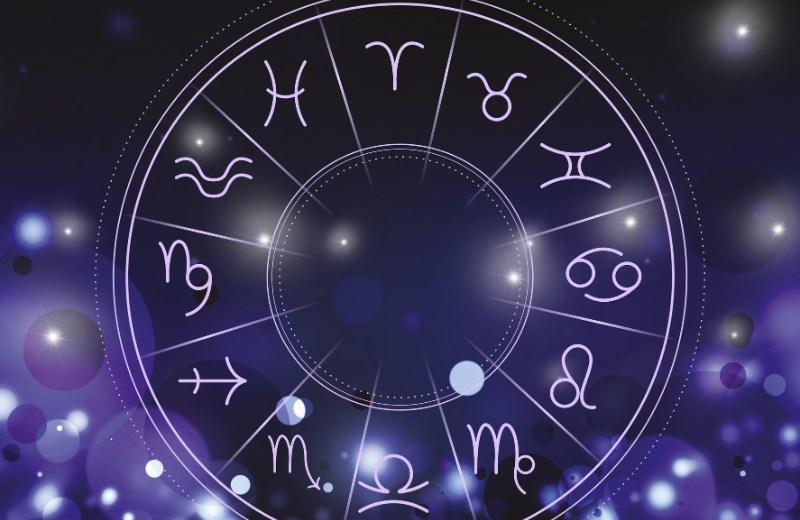
The zodiac signs where planets are located play a big role in how aspects work.
For example, if Mars and Venus form a square and Mars is in Aries while Venus is in Capricorn, the tension could show up as a clash between Mars’ bold and impulsive nature and Venus’ preference for stability and practicality.
On the other hand, the same square with Mars in Libra and Venus in Cancer might reflect the struggles between Libra’s need for balance in relationships and Cancer’s emotional focus on home and family.
Similarly, a trine between the Sun and Jupiter in Leo and Sagittarius might bring a sense of confidence and adventure because both signs are fiery and optimistic, while the same trine in Taurus and Virgo could highlight growth in practical, grounded areas like work or finances.
The signs add unique traits to the planets, shaping how their energies interact in your chart.
Aspect Strength and Orbs
The strength of an aspect largely depends on the orb, or degree difference, between the planets involved. Wider orbs, such as 8°–10°, weaken the influence of an aspect, making its energy less noticeable, whereas tighter orbs, around 1°–3°, amplify its impact and bring its themes to the forefront.
For major aspects like conjunctions or oppositions, astrologers allow wider orbs, while minor aspects require much tighter ranges (often within 1°–2°) to be considered significant. Understanding the orb of an aspect helps you gauge how strongly the planets interact and whether their influence is subtle or dominant in your chart.
Combining Aspects with Houses
The houses in which planets reside provide context for the areas of life affected by an aspect. For example, a trine between Jupiter in the 10th house (career) and Venus in the 2nd house (finances) could indicate career success that leads to financial rewards.
On the other hand, a square between Mars in the 7th house (relationships) and Saturn in the 4th house (family) might highlight tension between personal partnerships and familial obligations. By combining aspects with house placements, you gain a fuller picture of how planetary energies manifest in different life areas.
Aspect Energies in Transits
Transits occur when current planetary positions form aspects with planets in your natal chart, temporarily activating their energies. For instance, a transiting Jupiter trine to your natal Sun might bring opportunities for growth, optimism, or recognition.
A transiting Saturn square to your natal Moon could lead to emotional challenges or the need for greater emotional discipline. Transits help astrologers predict life events and changes, offering insight into timing and the type of experiences you might encounter during specific periods.
Historical and Mythological Background of Aspects
The concept of aspects dates back to ancient astrology, where they were seen as planetary “conversations.” The term "aspect" derives from the Latin aspectus, meaning "to look at," reflecting the belief that planets “gazed” at one another across the zodiac. Different angles were thought to carry specific energies based on their geometric relationships.
For instance, the trine, associated with harmony, was linked to the divine perfection of the number three, while the square was tied to tension and conflict.
How to Interpret Multiple Aspects to One Planet
When a planet forms multiple aspects, its energy becomes more complex and multifaceted. For instance, a natal Sun that is trine Jupiter, square Saturn, and sextile Uranus reflects a blend of optimism, discipline, and innovation.
To interpret these overlapping influences, consider the nature of each aspect individually and then explore how they interact. For example, the Sun’s trine to Jupiter might provide confidence and luck, but the square to Saturn could temper these traits with a sense of responsibility, while the sextile to Uranus offers creative problem-solving.
Aspects in Relationship Charts (Synastry and Composite Charts)
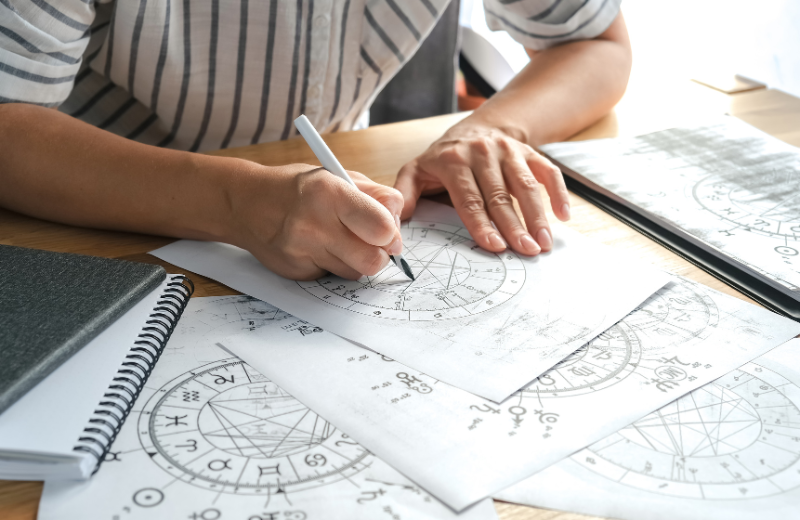
In synastry, aspects between two people’s planets reveal how they interact. A trine between one person’s Venus and the other’s Mars suggests harmony in attraction, while a square between their Mercury placements might indicate communication challenges.
Composite charts, which combine the energies of two individuals into a single chart, also use aspects to explore relationship dynamics.
For example, a composite Sun conjunct Jupiter might indicate shared optimism and growth, while a Moon square Pluto could point to intense emotional struggles that require transformation.
Aspect Rulership in Traditional Astrology
Traditional astrology emphasises the difference between applying and separating aspects. An applying aspect occurs when planets are moving closer to an exact angle, intensifying its influence, while a separating aspect happens when planets are moving apart, suggesting the aspect’s energy is waning.
Traditional astrologers also place importance on the planetary rulers of signs involved in an aspect, as these rulers influence how the aspect manifests. For instance, a square between Mars in Aries and Venus in Capricorn might be coloured by Mars’ rulership of Aries, bringing boldness, and Saturn’s rulership of Capricorn, adding caution.
Recommended for you!
Best SellersFrequently Asked Questions About Aspects in Astrology
Which aspects are good in astrology?
Trines and sextiles are widely regarded as positive aspects in astrology, bringing harmony and opportunities. These aspects often point to areas where things naturally flow with little resistance.
What are the most difficult aspects of Astronomy?
Squares and oppositions can feel challenging, but they’re essential for personal development. A badly aspected planet—one with numerous squares or oppositions—may represent a part of life where lessons and growth are most intense.
What happens if I don’t have any aspects between two planets in my chart?
When two planets don’t form an aspect, it’s called an unaspected relationship. This doesn’t mean the planets have no influence; rather, they function independently of one another. Without the interaction of an aspect, their energies may operate without any clear direction or connection, requiring extra focus to understand their roles in your life.
Are all aspects equally important in a chart?
Some aspects carry more weight than others. Major aspects like conjunctions, trines, squares, oppositions, and sextiles are more influential because they involve stronger and more noticeable energy. Minor aspects, such as the quincunx or quintile, add nuance and depth but are subtler.
Can aspects change over time?
Aspects in your birth chart are fixed because they reflect the planetary positions at the moment of your birth. However, transiting planets (those currently moving through the zodiac) form temporary aspects to the planets in your chart, influencing you for days, weeks, or months. These transits can trigger events, feelings, or opportunities based on the energies of the aspect.
Do aspects only apply to planets?
Aspects aren’t limited to planets. They also involve important points in a chart, like the Ascendant, Midheaven, and the Moon’s Nodes. For example, an aspect to the Ascendant can affect how you present yourself to the world, while an aspect to the North Node can highlight themes related to your life’s purpose.
What does it mean to have an aspect between an outer planet and a personal planet?
Outer planets (Uranus, Neptune, Pluto) move slowly and influence generational themes, while personal planets (Sun, Moon, Mercury, Venus, Mars) reflect individual experiences. When an outer planet aspects a personal planet, it can have a deep, transformative impact on your personality, life path, or behaviour, especially if the aspect is strong.
Can you have too many aspects in a chart?
A chart with many aspects can indicate a complex personality with a lot of dynamic energy. This can feel overwhelming at times, as it suggests multiple competing influences, but it also offers opportunities for growth and self-discovery. Balance is key in interpreting a chart with many aspects.
Are there any aspects associated with wealth or luck?
Aspects involving Jupiter, the planet of expansion and abundance, are often linked to luck and wealth. A trine or sextile between Jupiter and Venus, for instance, can indicate financial opportunities or ease in attracting resources. However, other factors in the chart also play a role in determining wealth potential.
Can aspects predict specific events?
Aspects in your birth chart provide insight into tendencies and potential, but they don’t guarantee specific events. Predictive astrology uses transits, progressions, and other techniques to determine when certain aspects might activate and how they could manifest in your life.
Study Astrology for £29
Learn more about astrology and what makes you tick with our Astrology Diploma Course, tailored to guide you through the cosmic influence of the stars on your life’s journey.
Why Choose Centre of Excellence?
- Flexible Learning: Our courses are designed with your convenience in mind, allowing you to learn at your own pace in the comfort of your home.
- Dedicated Support: Enrolling in our course grants you access to personalised guidance from our expert tutors and a community of like-minded learners on our optional Facebook study group.
We are excited to offer our Astrology Diploma Course at an exclusive discounted rate of £29!


